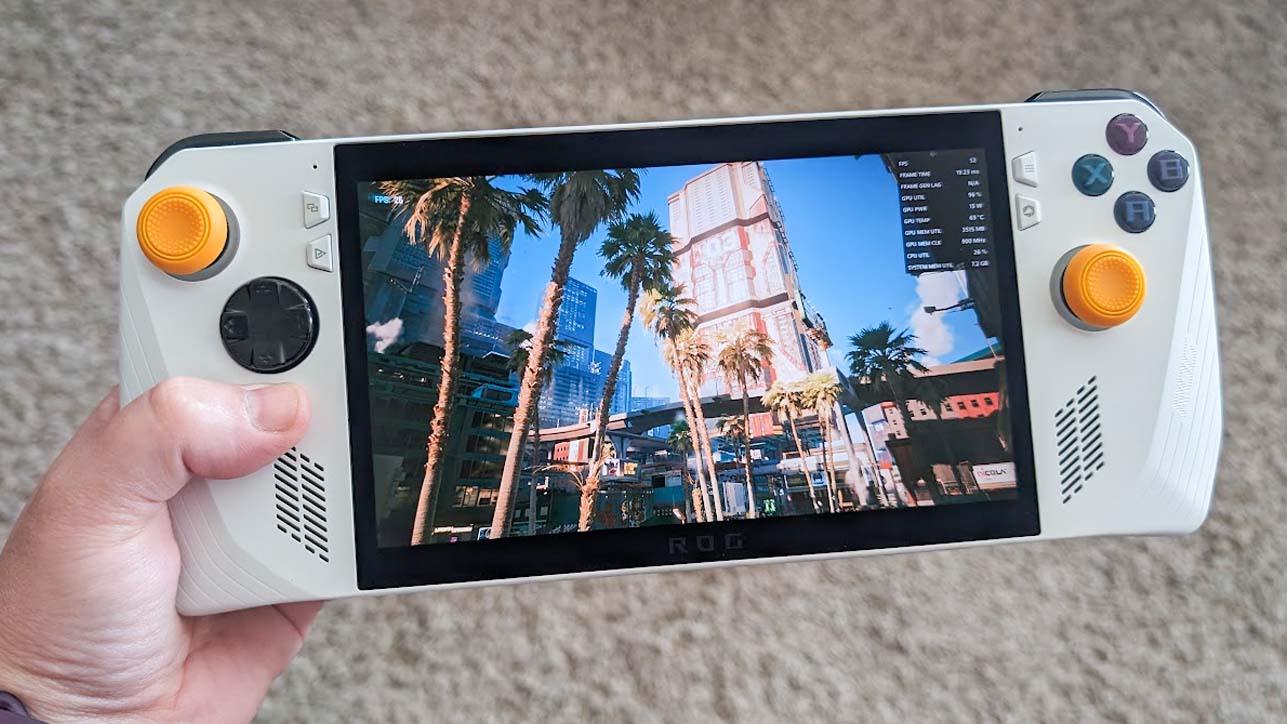We're getting a Lenovo Legion Go 'Lite' — Lenovo is potentially working on a more affordable PC gaming handheld
If you fancy yourself a Lenovo Legion Go, there might be a cheaper version around the corner.

What you need to know
- The Lenovo Legion Go is an excellent 8.8-inch PC gaming handheld that plays full-blown Windows PC games natively.
- Using the Z1 Extreme chipset from AMD, the Lenovo Legion Go can run many modern AAA PC games in a Nintendo Switch-like form factor, albeit with less-than-impressive 1-3 hour battery life when not plugged in.
- Hot on the heels of the refreshed ASUS ROG Ally X, sources familiar with Lenovo's plans tell us that the firm is set to release a revised version of the Lenovo Legion Go as well, dubbed the "Lite."
The PC gaming handheld wars are just heating up, with the Steam Deck, ASUS ROG Ally, and Lenovo Legion Go all rocking it out as the front runners.
The Lenovo Legion Go is my current go-to PC gaming handheld out of the ones I've tested. Its huge 8.8-inch screen is great for games clearly designed for monitors and TV sets, and the kickstand and detachable joysticks add some ergonomic flair that competing offerings don't. That being said, I would still probably generally recommend the ASUS ROG Ally overall as a better experience, with more-polished software, a higher-quality display (if smaller), and a more lightweight, less-bulky build. Lenovo might have a slimmer option available soon too, though.
RELATED: ASUS ROG Ally vs. Steam Deck vs. Lenovo Legion Go
Indeed, the Lenovo Legion Go is a heavy, bulky boy. All the features and beefy cooling packed into this PC gaming tablet adds a ton of weight to the overall package. Indeed, the Lenovo Legion Go weighs almost 200g more than the ASUS ROG Ally, accommodating features like that kickstand and a larger display. Sources familiar with Lenovo's plans tell us a less prolific version of the Lenovo Legion Go may be on the way.
Dubbed the Lenovo Legion Go Lite, the "Lite" version will sport the same Z1 range from AMD, but will sport some refinements over its predecessor. We're not entirely sure exactly what those refinements will be, but the "Lite" moniker could give us some hints. Perhaps it will have a slightly smaller display, maybe it'll ditch the detachable joysticks like the similarly-named Nintendo Switch Lite. "Lite" also hints at a more affordable price point, perhaps shying away from the Lenovo Legion Go's starting $630 price range for something more palatable. ASUS has a cheaper version of its Ally that uses the regular Z1 chipset from AMD, rather than the Z1 Extreme. So, it's entirely possible that this "Lite" version could also drop the "E" as well to impart some savings on customers.
It shouldn't be too long until Lenovo debuts its Legion Go Lite so we can get a better look at the real differences, but expect more of an iteration or evolution, rather than revolution.
More competition in the PC gaming handheld space

Taking native PC gaming on the go has been something I've wanted for decades. I'm not a huge fan of Nintendo games and have little nostalgia for them, but you can't help but admire how the Nintendo Switch forced hardware makers to rethink portable gaming, and we're seeing the fruits of that now across the board. The vast majority of "core" AAA gaming is designed for higher-end chips and large desktop displays, but the efficiency of x86 chips has improved to a point where devices like the ROG Ally and Lenovo Legion Go can provide a PC-like experience without compromises. Well, besides battery life, of course.
All the latest news, reviews, and guides for Windows and Xbox diehards.
Microsoft is also expected to be entering the high-end gaming handheld race with some form of Xbox-branded device in the near, to medium-term future. Microsoft has partnered heavily with Qualcomm for its Snapdragon X Elite Arm PC chip, bringing monstrous battery life to future ultrabooks, like the Surface Pro 11. While not as powerful as the Z1 Extreme x86 option from AMD, the Arm processors could eventually catch up, while also offering far superior battery life.
Microsoft demonstrated Borderlands and Baldur's Gate 3 running at around 30 FPS at 1080p on the new Snapdragon X Elite chips, and these are processors that could easily fit inside handheld form factors without compromise. It's unclear if Microsoft would go with Arm or AMD for any prospective Xbox handheld, but I think it's almost certain that we'll eventually see someone stick the Snapdragon X Elite into one of these devices, some day. Microsoft is also working to make Windows 11 more friendly on these types of devices, but the results of that effort remain to be seen.
With refreshes to the ASUS ROG Ally and Lenovo Legion Go on the horizon, it'll be interesting to see what happens when AMD debuts updated version of its Z1 chips in the future.

Jez Corden is the Executive Editor at Windows Central, focusing primarily on all things Xbox and gaming. Jez is known for breaking exclusive news and analysis as relates to the Microsoft ecosystem while being powered by tea. Follow on Twitter (X) and tune in to the XB2 Podcast, all about, you guessed it, Xbox!
